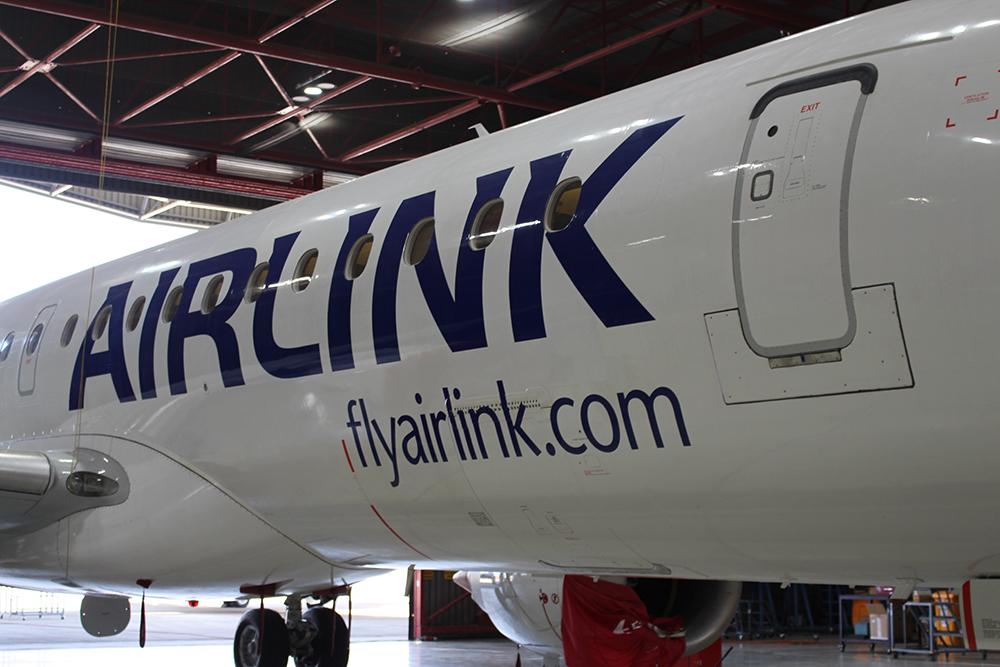
Airlink recently became the first African carrier to adopt the customized Embraer Collaborative Inventory Planning management system, designed to optimize inventory levels and lower operational costs for its all-Embraer fleet of 68 aircraft.
The South African airline expects the spare parts inventory support agreement to enhance cost management, minimize inventory investment and boost operational efficiency through the OEM’s global logistics network.
Rodger Foster, CEO and managing director at Airlink [Editor’s note: This interview took place before Rodger Foster retired from Airlink March 31], tells Aviation Week Network that the principal benefit of the Embraer Collaborative Inventory Planning (ECIP) program is to establish a strong framework of contracted supply terms for single-use spare parts that Airlink regularly consumes in ERJ135 and E-Jet heavy maintenance checks.
Previously, says Foster, each purchase order Airlink placed for those parts was a standalone commercial agreement with variability in key parameters such as price and lead time. “We used to shop around a lot for such parts to keep costs in check,” he says. However, he says this was burdensome to procurement workload and Airlink frequently encountered situations where suppliers did not have stock available or could not source parts within agreeable lead times that were driven by Airlink’s ongoing production planning for aircraft maintenance.
The ECIP agreement aggregates the business intelligence of both Airlink and Embraer (through its global aircraft service center network) on spare parts consumption patterns to forecast demand. It then places firm contractual commitments on Embraer, backed up by contractual recourse clauses, to ensure that the range of ECIP-contracted part numbers are “always in stock” at Embraer and available for weekly shipments against Airlink’s internal demand.
In exchange for these commitments, Airlink offers Embraer exclusivity of supply over a multi-year period. This is backed up by a “price matching” clause that keeps Embraer’s agreed pricing well aligned with the broader marketplace.
Foster believes the ECIP agreement will dramatically reduce the time, complexity and internal cost of procuring ECIP-covered parts. Previously, each purchase order would be the subject of RFQs sent to multiple prospective suppliers, but under the ECIP, these are now automatically posted to Embraer and managed through a weekly consolidated shipment of parts. Foster believes this also enables Airlink to streamline and optimize its inbound shipping costs for the relevant spare parts.
“This should help us reduce our own aircraft maintenance inventory levels and progressively release cash that is currently tied up in working capital, making it available for free cash flow,” Foster says. However, he believes it is still too early to quantify this.
The primary benefit Airlink aims to achieve with the ECIP agreement is a substantial reduction in the average heavy maintenance turnaround time. According to Foster, Airlink expects to accomplish this goal by enhancing the availability and lead time of the spare parts crucial for heavy maintenance checks.
“We should have a clear indication of how the ECIP is performing in the next 6-12 months,” he says.
Airlink plans to phase out its ERJ135 and ERJ140 fleet from 2030. Its 27 ERJs will eventually be replaced with E190s, so the airline expects the core fleet to include more used E190s.
“We haven’t yet decided on whether the gauge above the E190 will be [the Airbus] A320-200ceo, Boeing 737-800 or E195E2,” says Foster. “Whichever it is, we expect a sub-fleet of between 10-20 of those aircraft over the next five years.”





